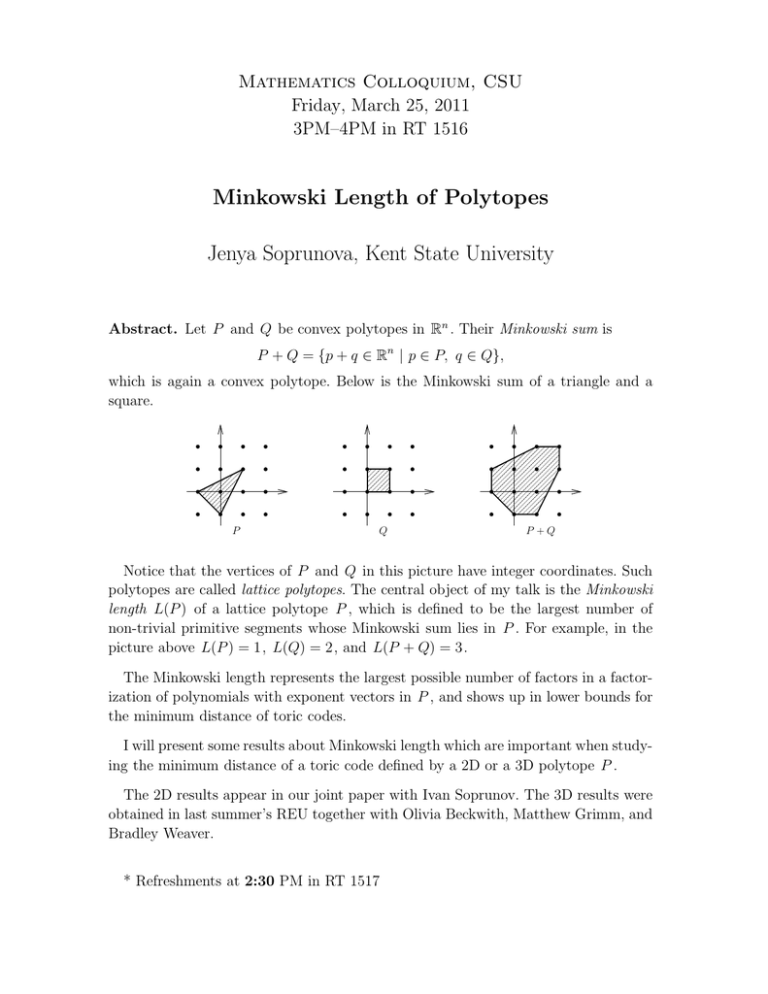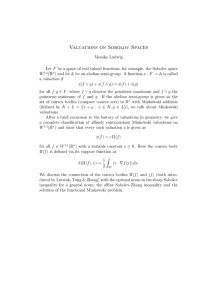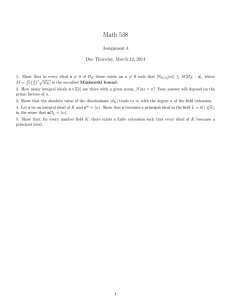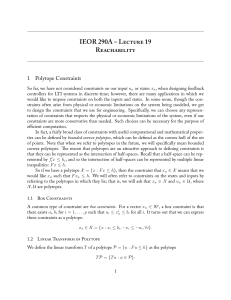Minkowski Length of Polytopes Jenya Soprunova, Kent State University Mathematics Colloquium, CSU
advertisement

Mathematics Colloquium, CSU
Friday, March 25, 2011
3PM–4PM in RT 1516
Minkowski Length of Polytopes
Jenya Soprunova, Kent State University
Abstract. Let P and Q be convex polytopes in Rn . Their Minkowski sum is
P + Q = {p + q ∈ Rn | p ∈ P, q ∈ Q},
which is again a convex polytope. Below is the Minkowski sum of a triangle and a
square.
111111
000000
000000
111111
000000
111111
000000
111111
000000
111111
000000
111111
P
1111
0000
0000
1111
0000
1111
0000
1111
Q
111111111
000000000
000000000
111111111
000000000
111111111
000000000
111111111
000000000
111111111
000000000
111111111
000000000
111111111
000000000
111111111
000000000
111111111
P +Q
Notice that the vertices of P and Q in this picture have integer coordinates. Such
polytopes are called lattice polytopes. The central object of my talk is the Minkowski
length L(P ) of a lattice polytope P , which is defined to be the largest number of
non-trivial primitive segments whose Minkowski sum lies in P . For example, in the
picture above L(P ) = 1, L(Q) = 2, and L(P + Q) = 3.
The Minkowski length represents the largest possible number of factors in a factorization of polynomials with exponent vectors in P , and shows up in lower bounds for
the minimum distance of toric codes.
I will present some results about Minkowski length which are important when studying the minimum distance of a toric code defined by a 2D or a 3D polytope P .
The 2D results appear in our joint paper with Ivan Soprunov. The 3D results were
obtained in last summer’s REU together with Olivia Beckwith, Matthew Grimm, and
Bradley Weaver.
* Refreshments at 2:30 PM in RT 1517





